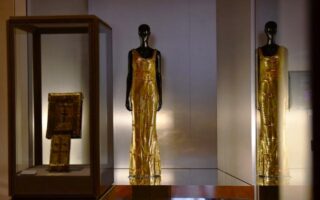How the Grands Magasins Revolutionized Shopping in Paris
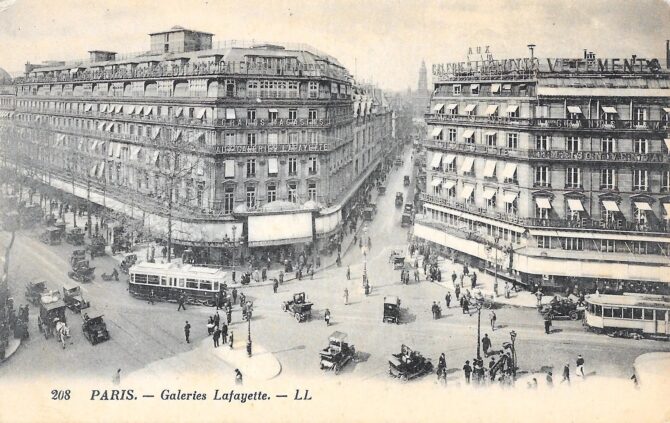

- SUBSCRIBE
- ALREADY SUBSCRIBED?
BECOME A BONJOUR PARIS MEMBER
Gain full access to our collection of over 5,000 articles and bring the City of Light into your life. Just 60 USD per year.
Find out why you should become a member here.
Sign in
Fill in your credentials below.
A visit to the current exhibition at the Musée des Arts Décoratifs – handily situated alongside the Louvre – will be a delight for anyone who wants to pretend they are shopping, Paris-style, at the height of the Belle Époque. It was perhaps the pert little white leather ankle boots with pearl buttons that I coveted most. They’d go well with the elegant blue linen skirt suit I spotted, with its waisted jacket and neat row of matching fabric buttons. Then perhaps I’d choose the straw hat, bedecked with artificial flowers in purple and white to complete my outfit.
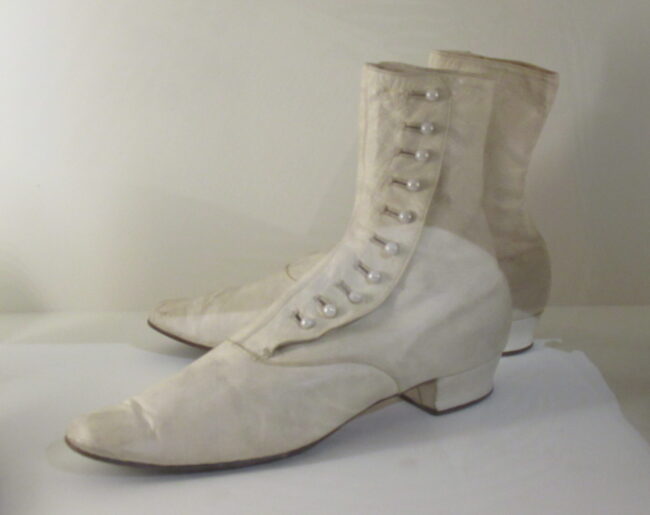
Boots on display at the “Birth of the Department Store” exhibit at MAD. Photo: Marian Jones
The hundreds of items on show are certainly captivating, but the exhibition is about much more than what 19th-century Parisian shoppers liked to buy. In fact, “The Birth of Department Stores” charts the rise of les grands magasins, from Bon Marché and Le Bazar de l’Hotel de Ville, which opened in the 1850s, to Printemps (1865), La Samaritaine (1870) and the Galeries Lafayette (1895). Industrialization saw the new bourgeoisie flocking to the department stores which sprang up on Baron Haussmann’s wide new boulevards and their story is told through a wide range of photographs, advertising posters and film footage.
Taken together the exhibits explain some of the many ways in which these “temples of fashion” changed the way people shopped. Many of their innovations are still with us today. Here are 10 examples.
1. Everything under one roof
Before Le Bon Marché opened in 1852, a customer would need to visit individual specialist shops for each item on their list: clothes, accessories, lingerie, fabric, lace and trimmings. But now, in one elegant building, she could tour the different departments and buy everything she needed. Better still, there was no need to brave the weather or the noisy streets where horse-drawn carriages left a trail of mud and worse. This was ideal for customers, but also for the shops, who could offer customers visiting for one thing a vast array of other enticing items.
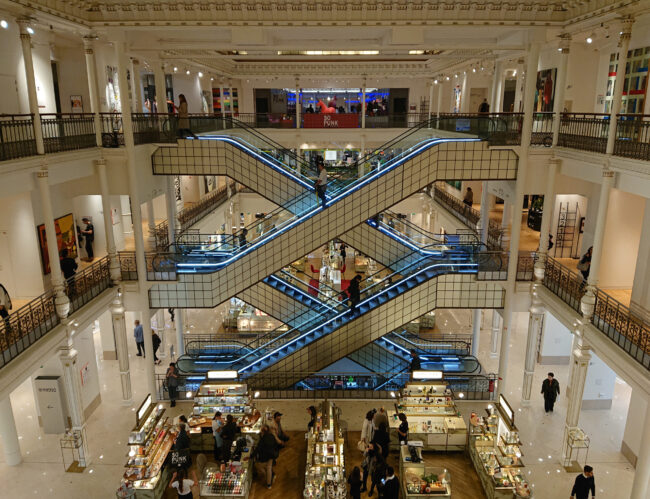
The interior of Le Bon Marché. Photo credit: Cheng-en Cheng/ Wikimedia commons
2. Shopping as leisure activity
The new boulevards offered entertainment opportunities such as restaurants, café-concerts and the grand Opéra building, opened in 1875. The grands magasins were designed to encourage wealthy Parisians to see shopping as a leisure activity too. The imposing staircase in the center of the Galeries Lafayette was actually modeled on the one at Garnier’s Opéra, for example and at Printemps, art nouveau touches such as the colored glass and wrought iron dome were equally seductive. The shops offered places to eat and drink, perhaps to see an exhibition of lace gloves, or the latest millinery ideas, all designed to encourage customer to do more than pop in for just one purchase.
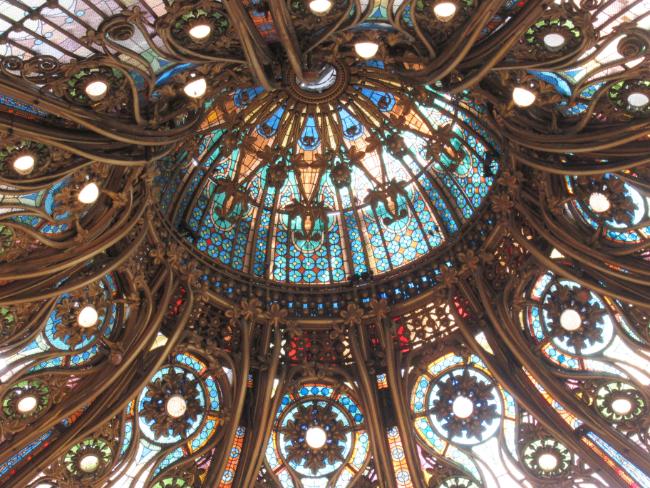
Galeries Lafayette Paris Haussmann. Credit: Marian Jones
3. A new freedom for women
The realization that in many families it was women who decided on the family’s fashion and domestic purchases encouraged the grands magasins to target them specifically. This, explains the exhibition curator Amélie Gastaud, led to a social change, giving women a new-found freedom to go out in public without a male escort. The department stores were, she says, “almost the only place where women were ‘authorized’ to go in complete safety.” From this point on, wives and daughters, who had previously tended to socialize at home, had somewhere safe and enjoyable to meet each other outside their homes.
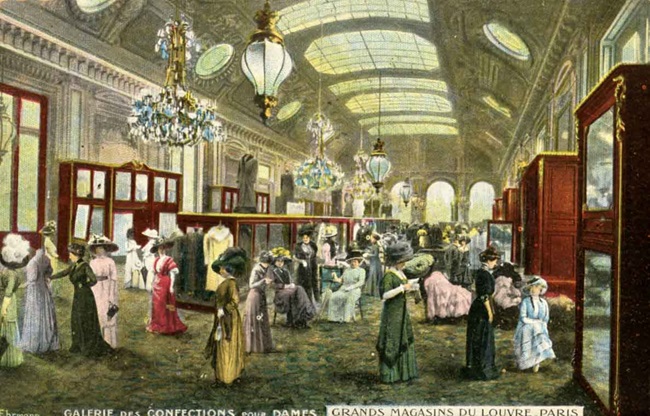
Grands Magasins du Louvre – Paris – Ladies Garment Hall. Photo: Oldimages/Flickr
4. A new idea: children as consumers
From targeting women, it was a natural next step to offer goods for children, a trend which was quite new. Clothes designed especially for them began to appear in the shops and during the 1870s the idea of marketing toys for Christmas took hold. Before long, they were being sold all year round. The exhibition has a wonderful section on these, displaying such delights as an early 20th-century horse-racing game and a model school, complete with pupils on benches, a teacher’s desk and an old-fashioned blackboard. A poster reminding customers that la rentrée – the autumn return to school – was imminent underlines the idea of selling goods for children.
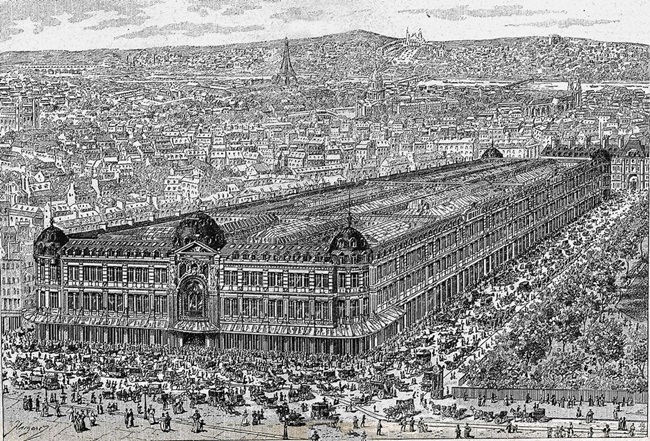
Au Bon Marché, engraving, 19th century. Unknown author. Wikimedia commons
5. The democratization of fashion
Now that goods could be sold in greater quantities, mass production became possible and that in turn led to lower prices. Luxuries previously only within the reach of the wealthy became more attainable. A customer who couldn’t easily afford to tour the city’s dressmakers and milliners could now find a good range of clothing in the department stores. These shops began employing designers to work on ideas for complete, ready-to-wear outfits, another move which put fashion within the reach of many more women than previously.
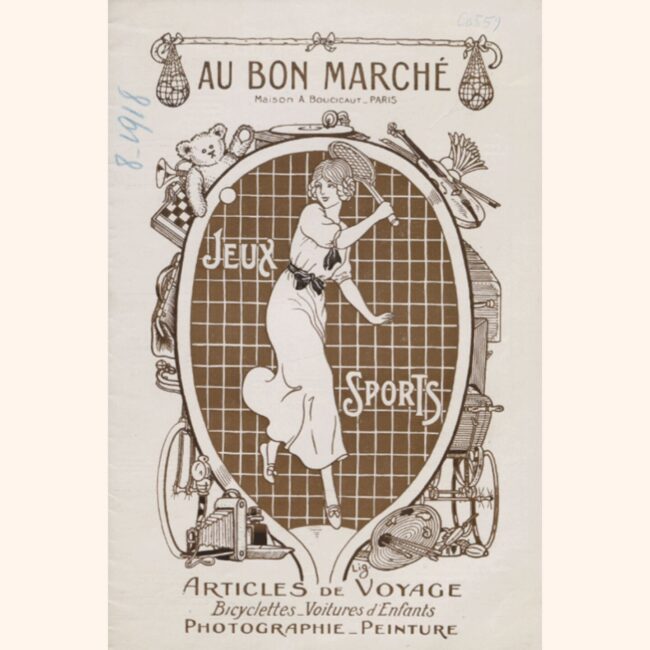
courtesy of Le Bon Marché
6. Advertising
From their earliest days, the grands magasins experimented with ways to entice their customers, laying the foundations for today’s advertising industry. They put great thought into window-dressing and they produced colorful posters advertising the latest fashions on offer and selling the lifestyle to which they knew their customers aspired. A large collection of these posters, offering nouveautés de saison (seasonal novelties) and showing elegant Parisiennes in the latest attire is one of the highlights of the exhibition.
7. Seasonal shopping
Another way in which goods could be promoted and sold in greater quantities was the idea of seasonal shopping. Posters showing women strolling on the beach under parasols or showing off the furs, boots and gloves which would protect them from winter weather all reinforced the idea that every new season brought the need for more purchases. Here too, the market for goods for children could be exploited through adverts for the back-to-school season and for toys and other gifts as Christmas approached. It was les grands magasins which brought in these new ideas.
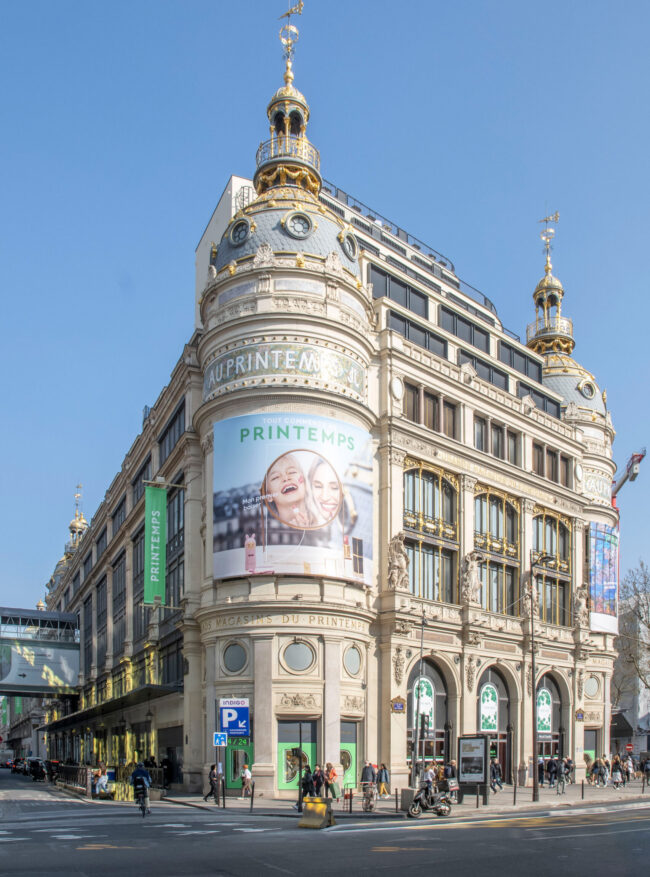
Printemps Haussmann. Photo: Arthur Weidmann / Wikimedia Commons
8. Sales
Another profit-boosting idea introduced by the department stores was the idea of special “sales” periods. Seasonal sales would be announced through publicity campaigns, in the press, through posters and through sending out catalogues to customers. A precise date was given, ensuring a rush of customers to the store in search of bargains. Another strategy was the staging of exhibitions when customers were invited to see a display of seasonal items or of novelties, such as feathers – ostrich, goose, peacock, pheasant – with which to decorate a hat. Sales of the featured items rose and the idea of the department store as a source of fashion inspiration was reinforced.
9. Mail order shopping
This idea was developed as another way to increase sales and to reach a much wider customer base. It was linked to the expansion of the railways, for between 1850 and 1870 the length of rail track in France rose fivefold, making it much easier to transport goods around the country. Examples of the catalogues produced are on display and these were so well-received that the annual versions were soon replaced by seasonal ones. By the 1870s they were large, richly illustrated publications, full of items which most customers in the provinces would otherwise not be able to buy.
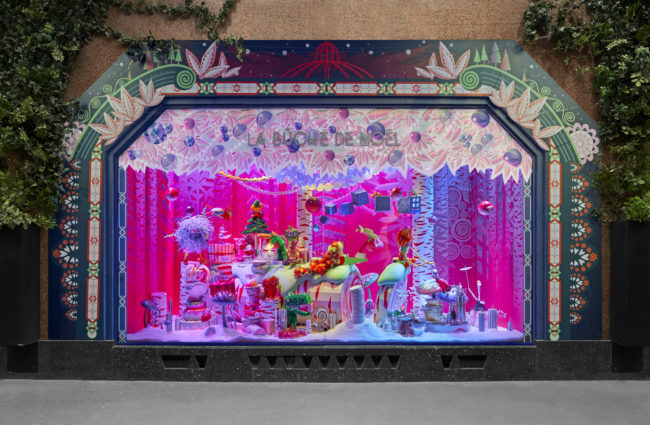
The famous Christmas windows at Galeries Lafayette Haussmann
10. An influence on art and design
From the beginning, the look of the new department stores was a huge part of their appeal. Their sumptuous interior décor and artistic displays of goods attracted customers. Then, in the early 20th century, they took things a step further. In 1912, Printemps became the first shop to establish its own art workshop, dedicated to the design of goods and displays. The others followed suit and such was their influence that at the International Exhibition of Modern Decorative and Industrial Arts in 1925, each of les grands magasins had its own pavilion. Still today, Parisians eagerly await their new window displays each season.
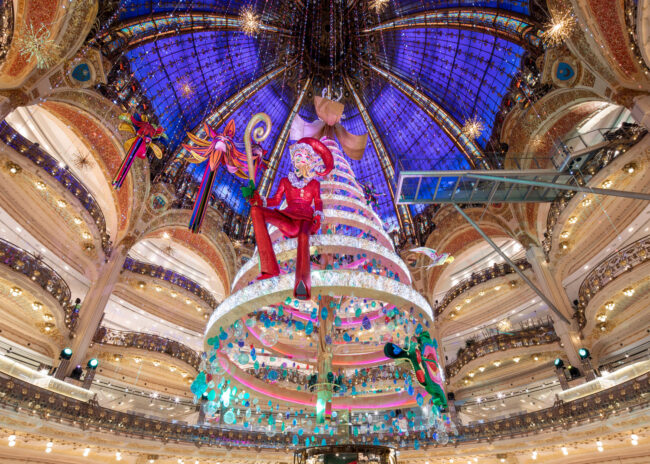
‘My Dream Christmas’ in collaboration with Charles de Vilmorin at Galeries Lafayette Paris Haussmann
This exhibition also highlights the wider changes in society which the grands magasins helped to introduce. They were large employers, sometimes with up to 3000 workers, and although their pay was low it was offset by a range of other benefits, all quite new for their time. These could include meals, housing and medical care, as well as social facilities. Most employees were male, especially in the early decades, but gradually more posts were offered for saleswomen, who were often lower-middle class girls from the provinces, seeking to better themselves and to find a measure of independence which had not been available to their predecessors.
It’s clear from the exhibition how much influence the grands magasins had in a variety of fields, not just shopping and commerce, but also in architecture and design. The social changes they promoted were also hugely significant. The sheer range of fascinating objects on show is certainly one reason to visit “The Birth of Department Stores,” but if you can’t make it, don’t worry. Eighty percent of the items on display come from the museum’s permanent collection, so why not plan a visit to the Musée des Arts Décoratifs at a later date?
DETAILS
The Birth of Department Stores 1852-1925
Musée des Arts Décoratifs
107, Rue de Rivoli, 1st arrondissement
Metro: Palais-Royal-Musée du Louvre or Tuileries
Until October 13th, 2024
Tuesday, Wednesday, Friday, Saturday and Sunday 11am – 6pm
Thursday 11am – 9pm
Lead photo credit : Galerie Lafayette Haussmann in the beginning of the 20th century. Postcard. Public domain
More in Department stores, grand magasin, Magasins, Shopping

